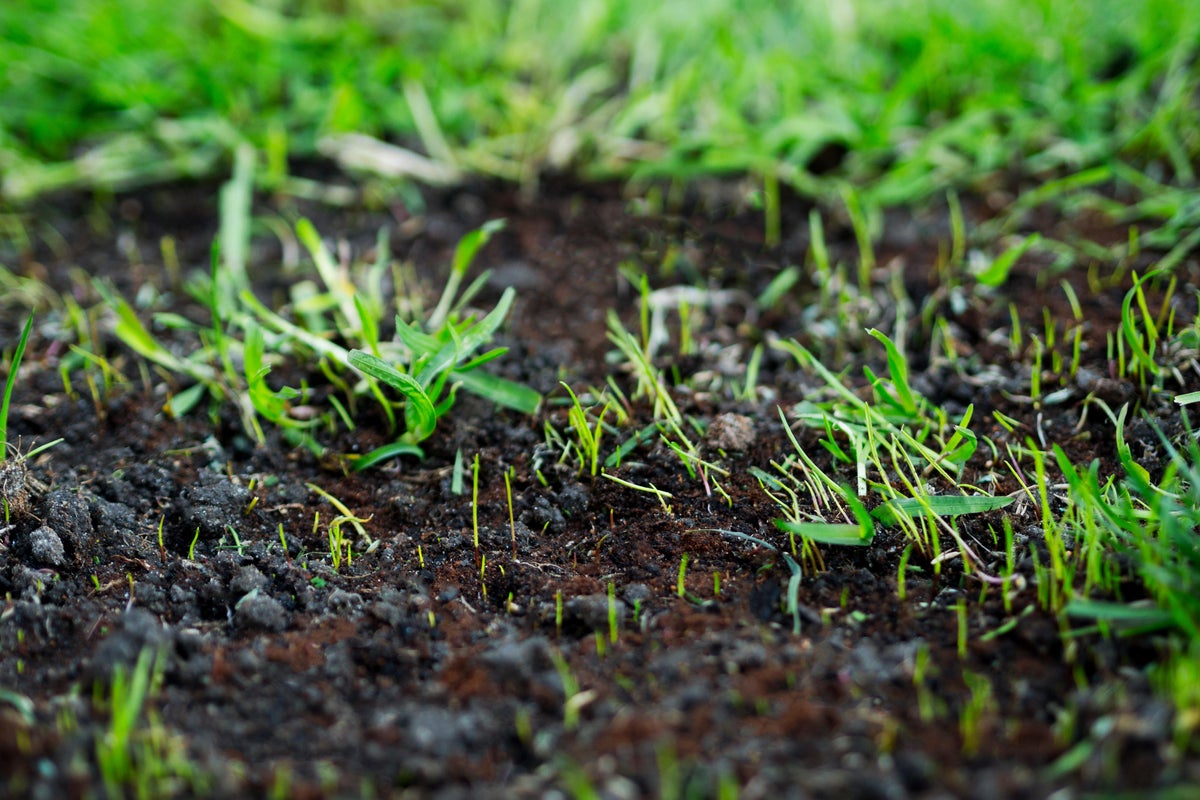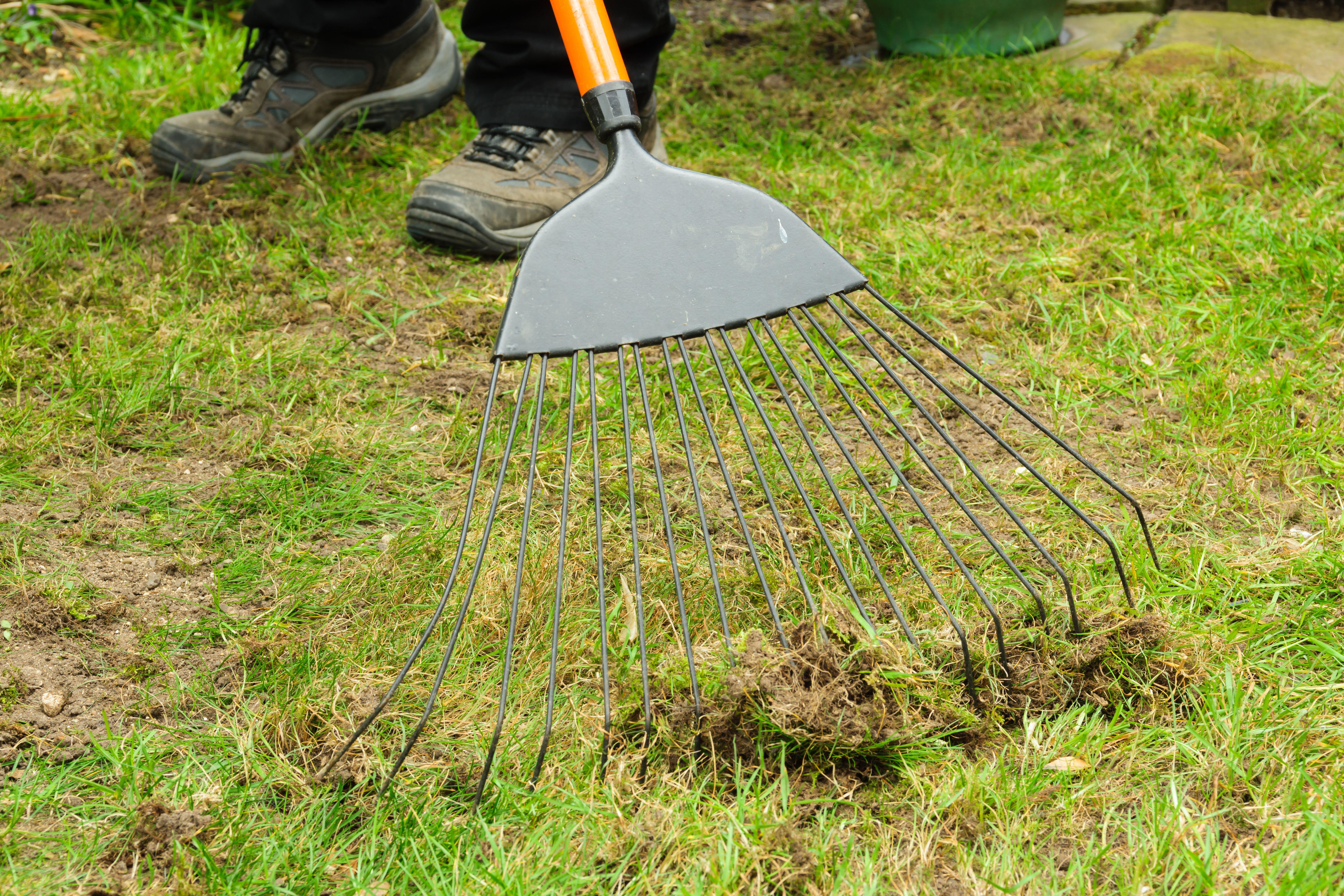
As the summer's relentless heatwaves give way to autumn rains, many British gardens are left bearing the scars of scorching sunshine.
Lawns, in particular, may show signs of distress, from sun-scorched patches and dry, thatched grass to bare spots caused by garden furniture and frequent use.
Autumn is the best time to breathe life back into your grass and a crucial period ahead of the winter frost, according to Tom Rowley, a former groundsperson at Leicester City FC and now a leading authority on football pitch care for the Grounds Management Association, which supports groundspeople across the UK.
“Even professional pitches take a beating during summer, but September and October are ideal months to rejuvenate a tired lawn. The soil is still warm, moisture levels start to rise, and grass is naturally entering its growth phase before winter,” Rowley said.
Rowley has shared his step-by-step guide to reviving your garden grass this autumn:
1. Rake out that thatch
“One of the biggest post-summer issues is thatch, that dry, spongelike layer of dead grass roots, stems and debris that builds up just below the surface. It stops moisture and nutrients from getting to the roots,” says Rowley.

To address the issue, use a rake (or a powered scarifier if you’ve got one) to remove thatch. Don’t be afraid to be firm.
“Removing thatch can be hard work, but it’s worth it. This is what gets the lawn breathing again.”
2. Deal with compacted, trampled areas
Areas that have been walked over repeatedly, like paths to the barbecue or under paddling pools, may be compacted, which means water can’t soak in.
”Use a garden fork or aerator to spike the ground and create holes that are at least 10–15cm deep,” advises Rowley. “Wiggle the fork slightly to open up the soil and let air and water in.”
For particularly stubborn areas, consider brushing in some kiln-dried sand or lawn topdressing to keep the holes open.
3. Bring bare patches back to life
Whether it’s from garden furniture or sun exposure, patches of dead or missing grass are common after summer.
“Rake the surface to break it up, sprinkle grass seed, and lightly cover it with topsoil,” says Rowley.

“Water gently every day unless it rains. You’ll usually see new shoots within two weeks.”
Choose a seed mix suitable for your garden – for example, hard-wearing mixes if you’ve got children or pets.
4. Feed – but don’t overdo it
“Many people skip feeding their lawns in autumn, but this is when grass needs help to recover and store energy for winter,” says Rowley.
Look for an autumn lawn feed with low nitrogen and higher potassium and phosphorus levels. “This strengthens roots without encouraging a flush of soft growth, which won’t survive winter frosts.”
Apply it after removing thatch and seeding, and follow the manufacturer’s instructions to avoid scorching.
5. Keep mowing, but not too short
”Don’t pack the mower away just yet,” Rowley advises.
“Keep mowing until growth slows, but raise the height of the cut. Aim to keep grass around 4cm tall, this helps protect it from the cold – preparing it for the colder months ahead – and prevents weeds and moss from taking over.
“And if they’re short, let the clippings fall. They return valuable nutrients to the soil. For longer clippings, remove as normal – they tend to clump, smothering the lawn and encouraging disease.”
6. Water wisely
If autumn remains dry, water newly seeded or fed areas early in the morning or late in the evening to prevent evaporation.
“Consistent moisture is key for recovery, but don’t overdo it or you’ll drown the roots. It’s also really important from an environmental perspective to always water consciously.”
Final thoughts
”A little effort in autumn goes a long way,” Rowley says. “By preparing your lawn now, you’ll not only undo summer’s damage but protect your lawn for winter and set yourself up for lush, healthy grass come spring.”







